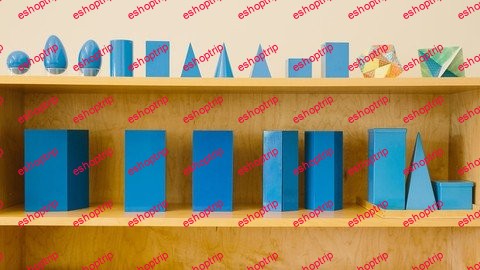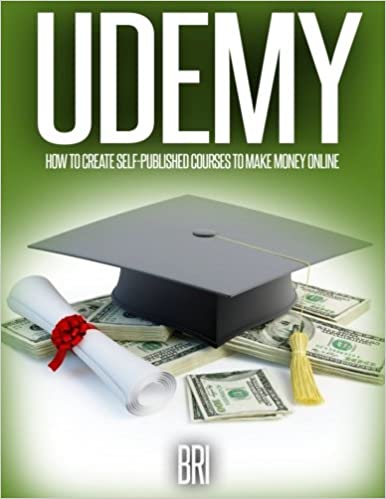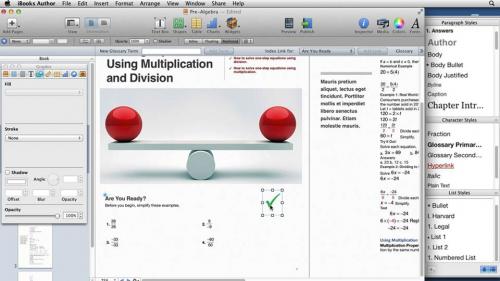Published 7/2023
MP4 | Video: h264, 1280×720 | Audio: AAC, 44.1 KHz
Language: English | Size: 2.54 GB | Duration: 2h 9m
Montessori Mathematics for Preschool that teaches the skills for solving maths problems using the Montessori Methods
What you’ll learn
Knowledge about the Montessori fun and exciting way of teaching mathematics
the nature of young children and the delivery techniques you need to teach children in the early years.
Math by using hands-on methods to help children advance at their own pace.
Observe in a Montessori classroom children working out addition, subtraction, multiplication, and division with numbers in the thousands
Requirements
Learners will need a basic understanding of Mathematical concepts.
Description
Life is built on mathematical principles; doing anything without understanding math is almost impossible. One of the most important things we can help children with is to develop mathematical skills in their first few years at school. Children who are taught Montessori math in earlier stages of their life will become successful at problem-solving, increase their interest in math, completely dissolve their phobia for math, and make them successful in scientific fields, engineering fields, information technology, physics, and even chemistry.Montessori Mathematics for Preschool is a course that teaches math by using hands-on methods to help children advance at their own pace. These methods include manipulating bead and stamp material, utilizing strip boards, using physical shapes to learn fractions, and internalizing essential math facts.Children who learn math the Montessori way are more confident in their math skills, they have a deeper understanding of quantities, and they feel free to experiment and make errors, as the process is emphasized over the product.Montessori Mathematics for Preschool is based on giving children exposure to concrete materials first, then giving them incremental opportunities to work on more abstract concepts. The children are able to hold materials in their hands, the materials are symbolic or representative (a number, perhaps), and that symbolism changes over time until children are ready to let go of the materials and find solutions on pen and paper or even in their heads (mental math). This idea of mastering a skill without the assistance of materials is referred to as abstraction.The basic Montessori Mathematical concepts for preschool include:· Present Concrete materials first and then introduce abstract concepts.· Teach quantities before the symbols.· Use attached quantities before introducing loose quantities.· Always teach in order of sequence, 1, 2, 3…Montessori Mathematics for Preschool gives children visual and tactile representations of the numbers they are working with. With this foundation, children as young as 4 can be observed in a Montessori classroom working out addition, subtraction, multiplication, and division with numbers in the thousands!
Overview
Section 1: Introduction
Lecture 1 INTRODUCTION TO MATHEMATICS
Section 2: MONTESSORI CLASSROOM SET-UP
Lecture 2 MONTESSORI CLASSROOM SET-UP
Section 3: MEMORY GAMES FOR BABIES AND TODDLERS
Lecture 3 MEMORY GAMES FOR BABIES AND TODDLERS
Section 4: Matching Games FOR BABIES AND TODDLERS
Lecture 4 Matching Games FOR BABIES AND TODDLERS
Section 5: PSC SORTING
Lecture 5 PSC SORTING
Section 6: MEASUREMENT
Lecture 6 MEASUREMENT
Section 7: COUNTING AND SORTING
Lecture 7 COUNTING AND SORTING
Section 8: NUMBER HOPSCOTCH
Lecture 8 NUMBER HOPSCOTCH
Section 9: PATTERNS
Lecture 9 PATTERNS
Section 10: SORTING
Lecture 10 SORTING
Section 11: COMPARING BIG AND SMALL
Lecture 11 COMPARING BIG AND SMALL
Section 12: TIME TELLING
Lecture 12 TIME TELLING
Section 13: ANT NEST
Lecture 13 ANT NEST
Section 14: NUMBER HUNT
Lecture 14 NUMBER HUNT
Section 15: NUMBER RODS AND CARDS
Lecture 15 NUMBER RODS AND CARDS
Section 16: SPINDLE BOX
Lecture 16 SPINDLE BOX
Section 17: SANDPAPER NUMERALS
Lecture 17 SANDPAPER NUMERALS
Section 18: CARDS AND COUNTERS
Lecture 18 CARDS AND COUNTERS
Section 19: ODD AND EVEN NUMBERS
Lecture 19 ODD AND EVEN NUMBERS
Section 20: TEACHING THE NAMES OF THE POWER OF 10
Lecture 20 TEACHING THE NAMES OF THE POWER OF 10
Section 21: COUNTING THROUGH WITH GOLDEN BEADS
Lecture 21 COUNTING THROUGH WITH GOLDEN BEADS
Section 22: SEQUIN BOARD A
Lecture 22 SEQUIN BOARD A
Section 23: COMBINING QUANTITIES WRITTEN SYMBOLS
Lecture 23 COMBINING QUANTITIES WRITTEN SYMBOLS
Section 24: THE 100 BEAD CHAIN
Lecture 24 THE 100 BEAD CHAIN
Section 25: ADDITION USING SHORT BEAD STAIR
Lecture 25 ADDITION USING SHORT BEAD STAIR
Section 26: ADDITION WITH CHANGE
Lecture 26 ADDITION WITH CHANGE
Section 27: SUBTRACTION WITH CHANGE
Lecture 27 SUBTRACTION WITH CHANGE
Section 28: DIVISION WITH CHANGING AND REMAINDER
Lecture 28 DIVISION WITH CHANGING AND REMAINDER
Section 29: MULTIPLICATION BOARD
Lecture 29 MULTIPLICATION BOARD
Section 30: INTRODUCTION TO FRACTIONS
Lecture 30 INTRODUCTION TO FRACTIONS
Section 31: CONCLUSION
Lecture 31 CONCLUSION
This course is designed for teachers and all education professionals who teach Mathematics to children especially at the primary/elementary level.
Homepage
https://anonymz.com/?https://www.udemy.com/course/montessori-mathematics-for-pre-school/











Reviews
There are no reviews yet.